SD › Best Things to Do in Boston
Updated: February 4, 2020
By Santorini Dave
See Also
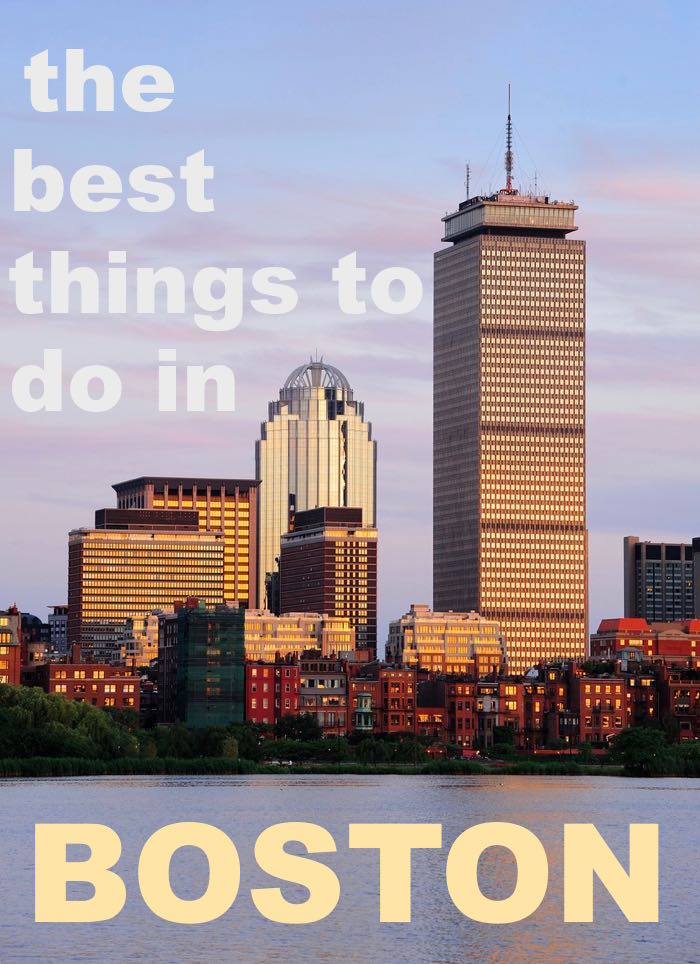
Boston Things To Do – My Advice
- Boston is smaller than you think, and most attractions are within a twenty minute walk of downtown. Public transportation is easy and reliable, even out to suburbs like Salem. A car is completely unnecessary most of the time.
- Walk the Freedom Trail early in your trip, if possible. It’s a great way to see the historical highlights while getting a feel for how the city is mapped out.
- Many of Boston’s historical sites are free to the public, but they often close early in the day or only offer tours during certain hours or days. Check websites for hours of operation to plan your trip wisely.
- The Whale Watching Cruise from Boston is excellent.
The Top 42 Things to Do in Boston
-
Museum of Fine Arts
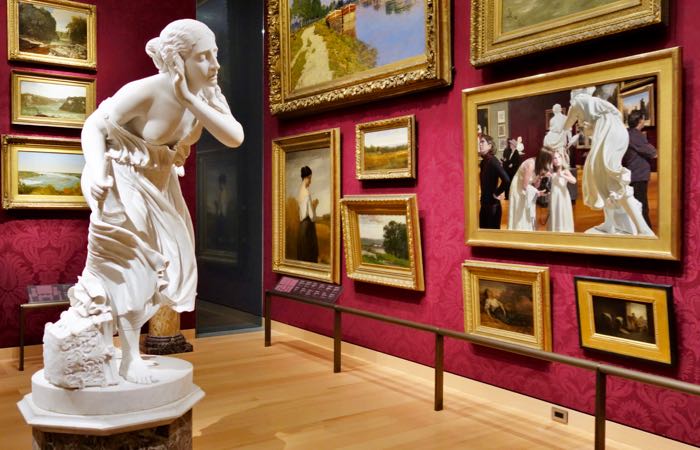
The MFA in Boston houses over 500,000 works of art, from ancient Egyptian artifacts to contemporary work, with one of the largest Japanese art collections outside of Japan and an expansive array of French impressionist works. Founded in 1870, the museum now sees over a million visitors per year. Be prepared to spend a few hours here, as the collection is overwhelming in scope and size! If you only have an hour or so, grab a highlights map, which leads visitors through twelve masterpieces in an hour, including Monet’s Water Lilies, or one of their specialized tours focusing on African American or Latin American art or a tour geared toward families. -
Boston Public Garden
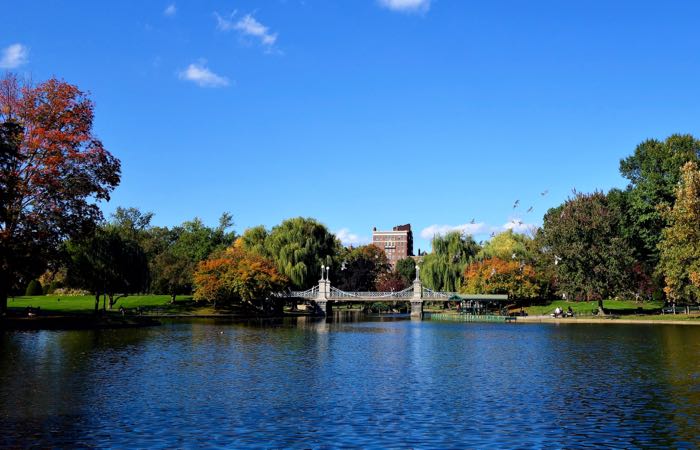
The first public, botanical garden in America, the Boston Public Garden borders the length of Boston Common. The garden opened about 200 years after the Common, so it has an entirely different Victorian feel with decorative plants, winding pathways, and the lagoon, where the famous Swan Boats cruise in the warm months. Several statues are scattered throughout the grounds, the most prominent being the Equestrian Statue of George Washington at the Arlington Gate, though the works here also include fun characters from The Jungle Book and Make Way for Ducklings. -
Isabella Stewart Gardner Museum
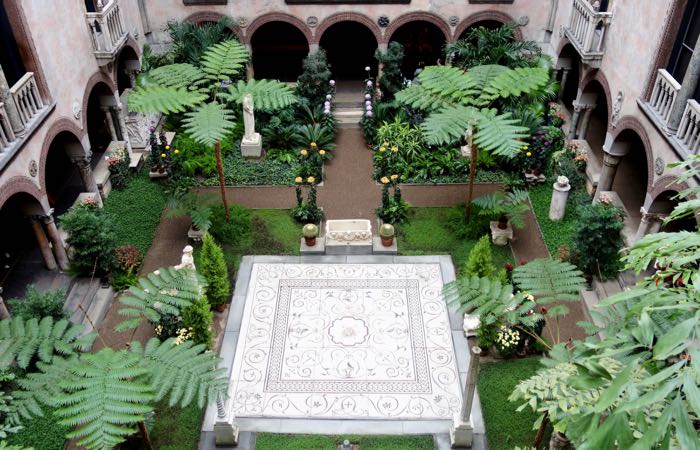
This museum operates out of the historic home of Isabella Stewart Gardner, and showcases her personal art collection, which she began on her own and accumulated with her husband. The palatial estate includes work by Botticelli, Titian, Fra Angelico, and John Singer Sargent, among many, many others. Her collection also includes original pressings of books by Dante and illuminated manuscripts. Upon her death in 1924, her will included that the museum be open to all, but all works had to be displayed in the order that she herself had place it in. This meant that after an art theft in 1990 (among the thirteen stolen works were a Rembrandt and a Vermeer), the spaces in which those works hung remain empty. Gardner was a Red Sox fan, so discounts are given to people wearing Sox garb. Discounts are also given to anyone named Isabella. -
Trinity Church
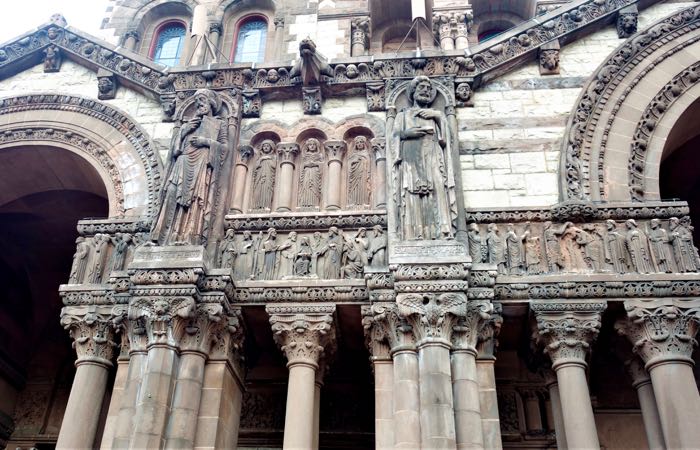
The congregation at Trinity Church has been around here since 1733, but the current building was constructed after the Great Boston Fire. Designed by H. H. Richardson, this landmark church solidified the architect’s reputation and stands as the first Richardsonian Romanesque style building. Breaking with tradition at the time, the church was built in the shape of a Greek cross with an open auditorium plan. Among its many artistic features are hand-painted murals my John La Farge, stained glass windows by several different artists, and intricate mosaics. Consistently ranked in the top ten of America’s best and most significant architecture, Trinity Church has been featured in the film The Boondock Saints and the game Fallout 4. Guided and self-guided tours cost $7, with the exception of the free tour following Sunday morning service at 11:00 in summer and at 12:15 in winter. Do check their online calendar for current scheduled tours; self-guided tours are possible Wednesdays through Saturdays from 10:00 – 4:30 and on Sundays from 12:15 – 4:30. -
Little Italy
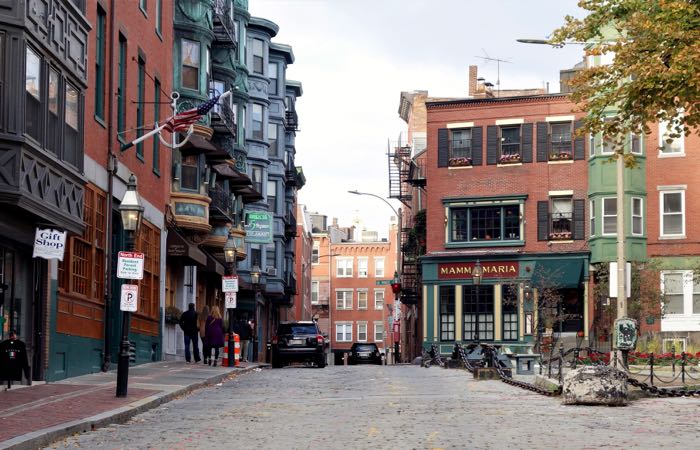
This North End area is the oldest inhabited area of Boston, with brick streets and an old world feel. Buildings here span the centuries and include the Paul Revere House from the late 1600s and the Old North Church from the early 1700s, though most came much later. In the early twentieth century, the neighborhood became the home to the largest population of Italian immigrants in the city and still maintains that character, with several Italian fine dining restaurants, bakeries, and vendors selling fresh pasta, olive oil, and coffee. If you’re lucky enough to be in Boston on the last Sunday in August, do not miss the Feast of St. Anthony, with its decorated streets, 10 hour long parade, live music, and over a hundred food carts, a celebration named by National Geographic as “The feast of all feasts.” -
Boston Public Library
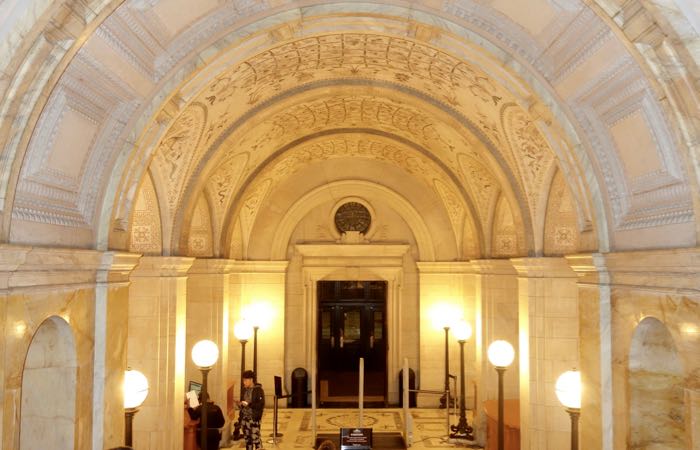
The Boston Public Library was founded in 1848, but this location was built in 1888 and offers one of the largest lending collections in the U.S. with over 23 million items. Free tours are offered seven days a week here, focusing on the sweeping, Renaissance-style architecture, inspired by Paris’ Bibilotheque Nationale and art-filled spaces with sweeping murals by John Singer Sargent, who died before finishing his final installation here (it remains as he left it). While here, don’t forget to make a wish by rubbing the tail of one of the stone lions leading up the staircase of the grand entry inside. -
Freedom Trail
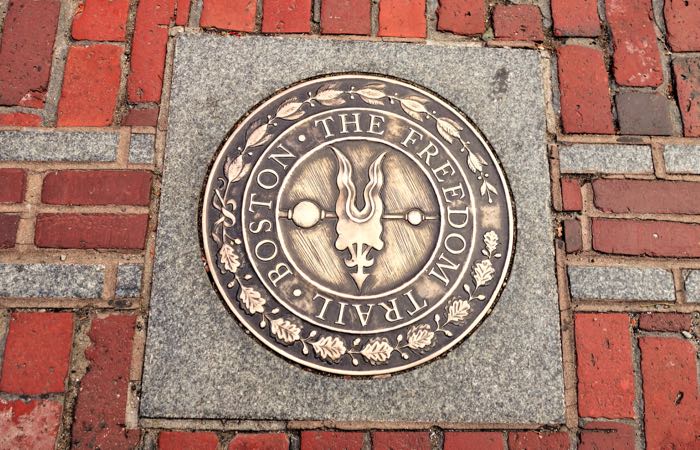
This walking trail winds for two and a half miles beginning at Boston Common and ending at the Bunker Hill Monument in Charlestown on the opposite side of the River. There are sixteen historically significant sites on the trail, all noted with bronze markers embedded in the sidewalk. Several companies offer guided tours by docents wearing period garb, but visitors can very easily follow the trail on their own, as its entire length is well marked in red brick and free maps are available at the visitors’ center in the Common. Most of the sites are free to visit, but a three stops charge admission: The Paul Revere House, the Old South Meeting House, and the Old State House. -
Black Heritage Trail
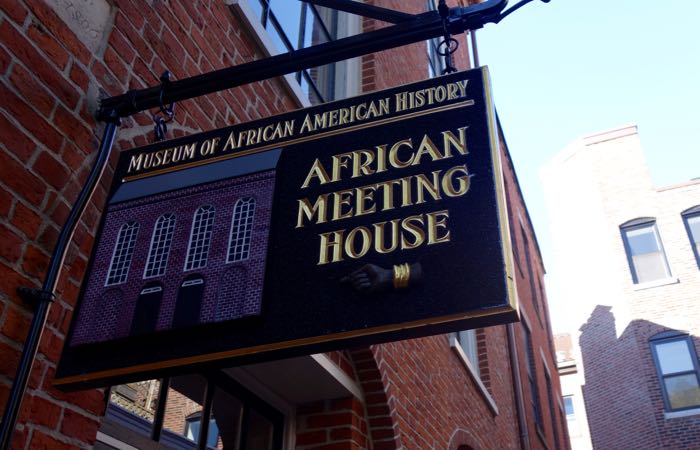
This pedestrian trail passes for a mile and a half through Boston, mostly in the Beacon Hill neighborhood, the historic home to Boston’s black population pre-Civil War. The trail begins at the Shaw/Massachusetts 54th Regiment Memorial at Boston Common and ends at the African Meeting House. Many of the sites along the trail are private residences, including the Lewis and Harriett Hayden House, home of famed abolitionists and a stop on the Underground Railroad. The Museum of African American History operates two of the final stops, the Abiel Smith School and the African Meeting House, and offers tours of the sites regularly throughout the day. -
Back Bay
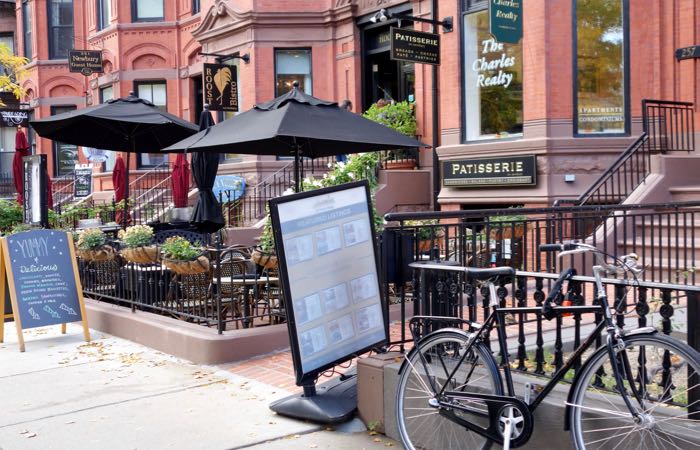
Back Bay is the quintessential Boston neighborhood, with rows of Victorian brick houses, architectural landmarks, upscale boutique and name-brand shopping, and hip restaurants. Located on the south side of the Charles River, this area was once an actual bay. But in the mid-1800s, after a failed attempt at building a milldam, the area was filled in to make more usable land for a growing city. The area is now the most upscale part of the city, known as “The Rodeo Drive of the East.” Back Bay is home to some of Boston’s finest architecture, including the Boston Public Library and the John Hancock Tower, the tallest building in New England. You’ll find the best shopping in the city on Newbury and Boylston Streets here, with hundreds of retailers lining the sidewalks. Trendsetting restaurants, sunny sidewalk cafes, and upbeat bars round out the experience. -
Warren Anatomical Museum
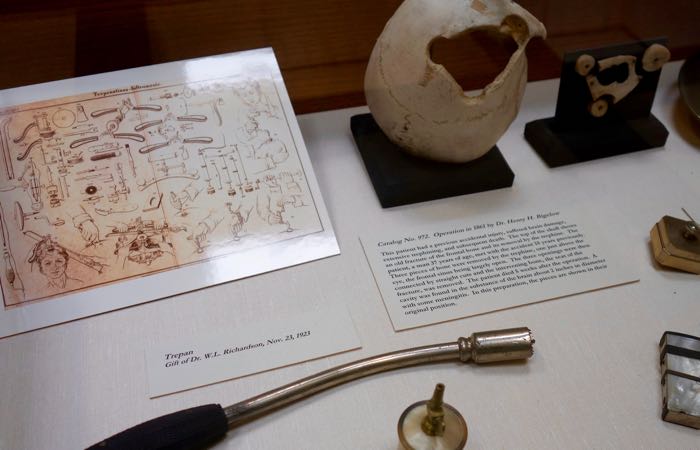
Just a few display cases on the fifth floor of Harvard Medical School’s Countway Library of Medicine make up The Warren, an anatomical and pathological museum, originally used for teaching medical students. The collection is small but filled with significant items. It most famously displays the skull of Phineas Gage, a rail worker who survived a tamping iron through his head (the tamping iron is also here), though his personality changed drastically. The Warren also owns the inhaler used in the first ether-assisted surgery, a specimen of conjoined twins, and a Beauchene skull. The museum can be tricky to find, as the entry is on the back of the concrete library building, not on the street. Just sign in at entry; admission is free. -
All Saints Way
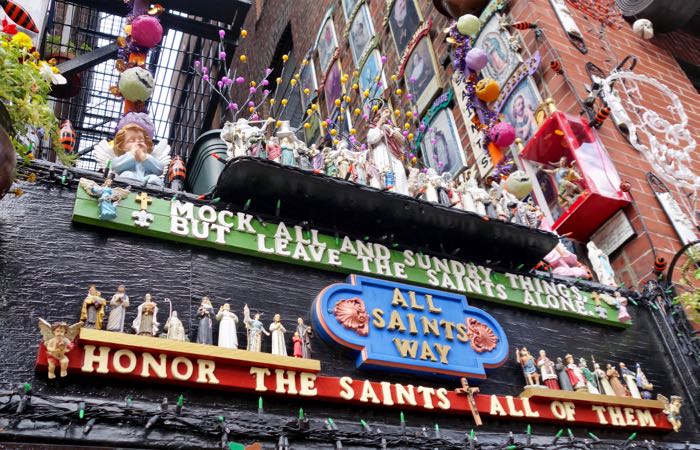
In the North End in an alley off Battery Street you’ll find All Saints Way, a collection of Catholic icons owned by Peter Baldassari. He began collecting saint cards as a child, and now the collection has grown to include thousands of framed portraits, figurines, and hand-made art displayed high up the brick walls. The alley is on private property and gated, though much of the collection is visible even when the gate is closed. When the gate is open, though, Baldassari has been known to give brief tours to visitors who ask. If you tell him your birthday, he may even locate the shrine for your patron saint. -
Bunker Hill Monument
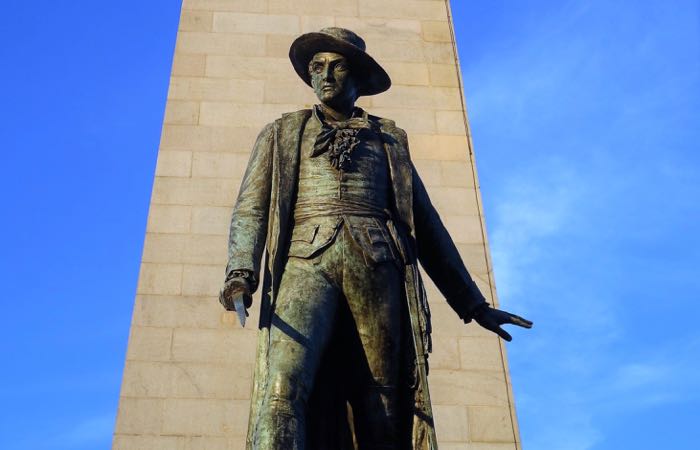
Bunker Hill was the first major battle between the Colonial and British forces and one of the bloodiest in the entire Revolution. Though the British won the battle, this was an important fight for the colonists, who saw how much damage they could inflict through their efforts. The monument stands at a little over 67 meters; visitors are allowed to climb to the top (the view is incredible), but you do need to pick up a free climbing pass from the Bunker Hill Museum first (43 Monument Square, at the bottom of the hill). At the base of the monument, you’ll find a statue erected to honor Colonel William Prescott, leader of the rebel forces, who allegedly was the one to give the order “don’t fire until you see the whites of their eyes” to the troops running low on ammo. -
USS Constitution Museum
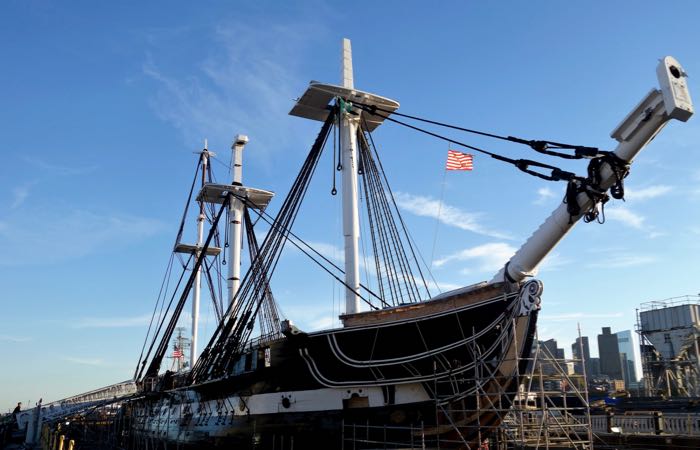
Also known as “Old Ironsides”, this wooden-hulled ship is the oldest commissioned naval vessel in the world still afloat. Named by President Washington and launched in 1797, the ship is best known for defeating five British warships in the War of 1812. The Constitution is located on the north side of the Charles River in the Charlestown Navy Yard. Visitors are allowed to board the ship for a tour and photos; check the website for hours and be advised that the last tour boards half an hour before the scheduled closing time. All must pass a security screening, while visitors over 18 will need to present a photo ID. -
Abiel Smith School
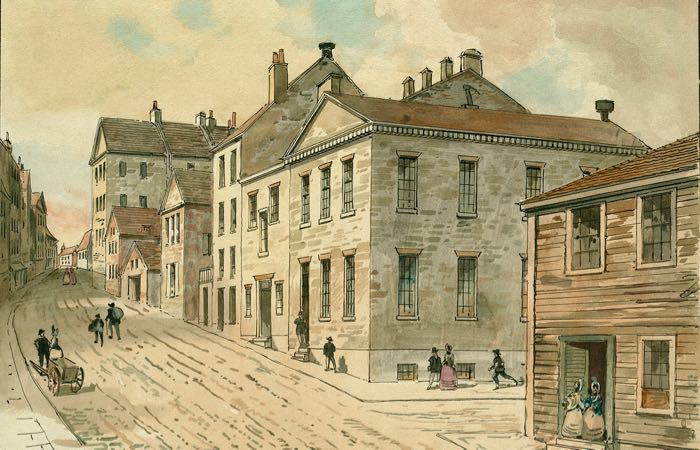
Built in 1835, the Abiel Smith School was the first black public school in Boston, replacing the school in the African Meeting House. For twenty years it continued to serve as such until all Boston public schools were integrated in 1855. Today the school is the site of the Museum of African American History (the museum operates both the school and the African Meeting House) and is a stop on the Black Heritage Trail. Open 10:00 to 4:00 Monday through Saturday.
photo credit -
African Meeting House
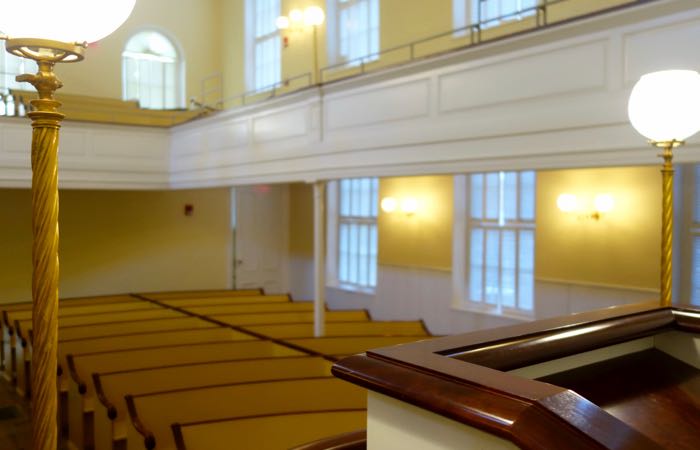
Built in 1806, the African Meeting House is the oldest black church remaining in the United States. More than just a church, this site was a hub for the abolitionist movement; Fredrick Douglass spoke here, encouraging free blacks to serve in the Civil War, and it was here that the 54th Massachusetts Regiment recruited their ranks. This is the final stop on the Black Heritage Trail. Entry is by guided tour only. Sign up for a time (they run every 30 minutes) at the Museum of African American History inside the Abiel Smith School. -
Edgar Allan Poe Square
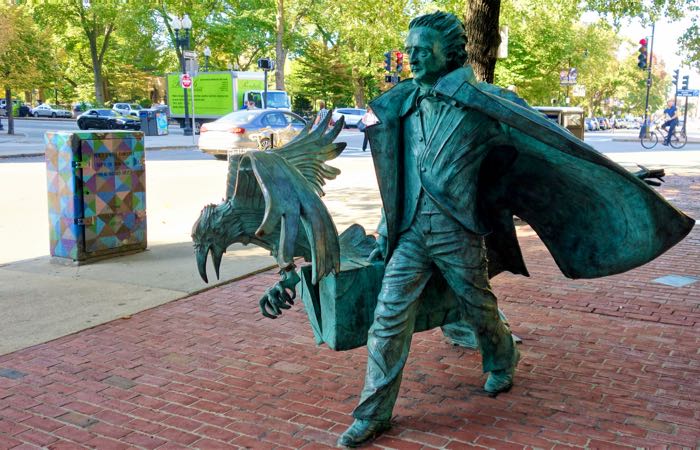
This little square is across the street from the southwest corner of Boston Common, near where the author was born. Its newest and most prominent feature is a life-sized statue of Poe hurrying down the street, jacket blowing open, with a raven bursting from the front of his suitcase, and a trail of papers and a human heart falling out the back. Erected in 2014 after a Poe bobblehead fundraising campaign, this statue of the brooding local writer is not to be missed. Poe Square also has a small plaque and a bronze relief of the author. -
Beacon Hill
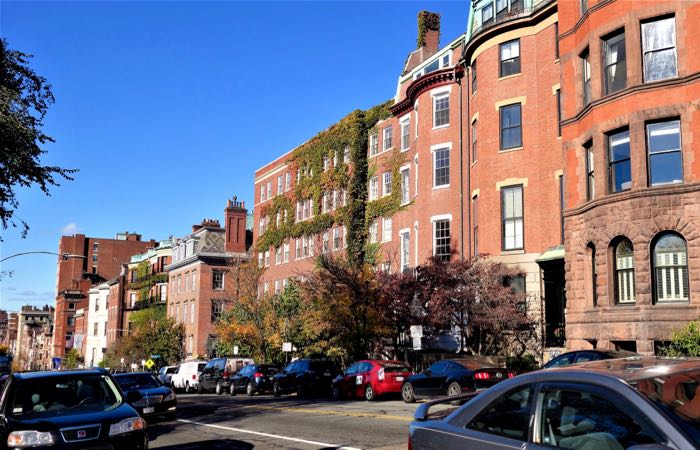
Primarily a residential area, Beacon Hill was the historic home to over half of Boston’s African American population and the hub of the nation’s abolitionist movement. Today, this is one of the most expensive places to live in Boston. Here you’ll find iconic gas lamps lit over brick sidewalks, Federal Style row houses, antique shops, boutique stores, and chic little restaurants. This neighborhood is walking distance to nearly all of Boston’s attractions, while main draw here is its charming architecture and historical significance. Must-see sites here are connected by the Black Heritage Trail, and include the Abiel Smith School (the first public school for free black Americans), the African Meeting House (first black church in America; central rallying place for the abolitionist movement), and the Lewis and Harriett Hayden House (a stop on the Underground Railroad). The gold-domed Massachusetts State House is here, too, while Boston Common makes up Beacon Hill’s southern border. -
Bodega
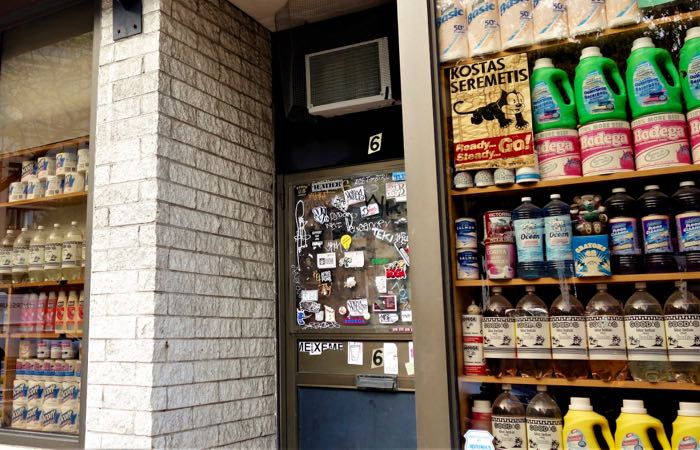
In the Back Bay neighborhood on Clearway Street, you’ll find a dusty convenience store with no sign. The windows are stacked to the top with cleaning supplies, sodas, and snacks, and the guy working the counter doesn’t look like he takes any lip. But if you walk straight back to the Snapple machine and push, you’ll enter through a secret door to a high-fashion sneaker store selling the latest kicks, caps, and accessories. The shop has been around for over 10 years now, without any advertising, signage, or phone number (they only recently got a website), but they’ve built a reputation as a haven for sneakerheads and have co-branded sneakers with Adidas and opened a pop up store in Tokyo. -
Brewery Tour
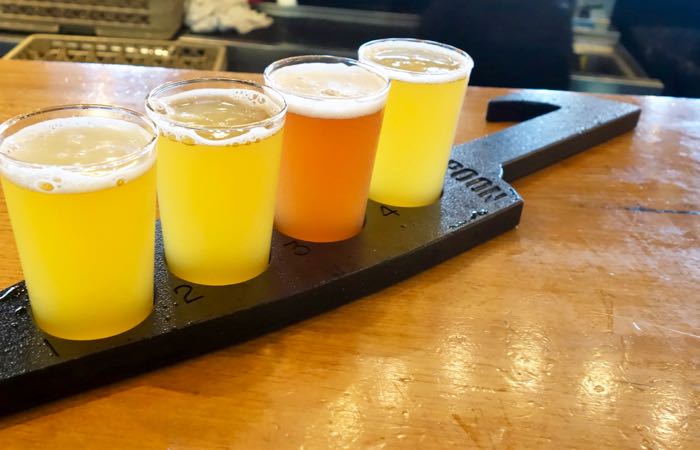
The people of Boston take their beer seriously, and one of the best ways to experience the local beer scene is through a brewery tour. There are several spots offering tours of their facilities, which generally include a lesson in craft and end with a tasting session. Harpoon Brewery in the Seaport District offers the best tours, with over 20 varieties available to sample at the end. The best known brewery in the area is Sam Adams – it’s quite a haul from downtown, and not easy to get to via public transportation, but their tours are free and enjoyable. -
Cambridge
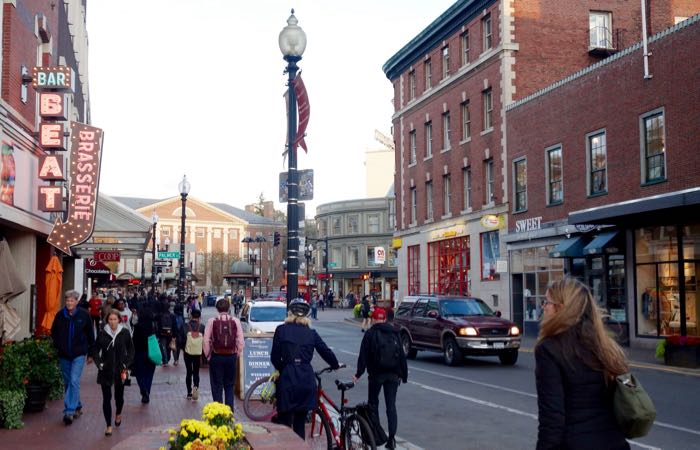
Best known as the home of Harvard and MIT, Cambridge sits due north of Boston on the opposite side of the Charles River. With its large university-age demographic, Cambridge is a lively city with a youthful, intellectual vibe. You’ll find lots of trendy boutiques, sidewalk cafes, coffee houses, and bars geared toward millennials, especially near Harvard Square. With the numerous area schools come loads of great museums with varied focuses. The largest and best known is the Museum of Science, a fun family destination with a butterfly house and a live electricity demo. But there are tons more, covering specific topics that include Islamic and Asian art, Semitic archaeology, medical history, and comparative zoology, among others. Cambridge is big, and it takes a time to explore, so plan on taking a day or two here. Spend the morning walking or kayaking the Charles River, before heading out to hit a museum or three. Try on awful sweaters and hats at a vintage shop, and spend the end of the night in Central Square, drinking craft cocktails made with mezcal. -
Greenway Carousel
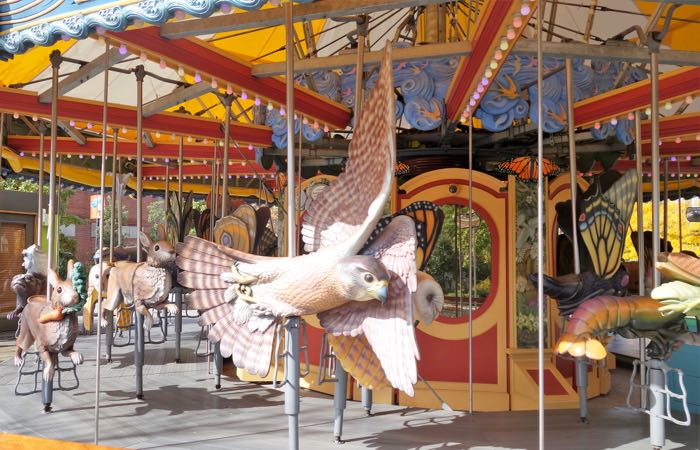
Located in the Rose Kennedy Greenway, the carousel has 36 saddles on a variety of animals native to Massachusetts, including lobsters, harbor seals, owls, and grasshoppers. This is an accessible carousel, designed with children and adults with auditory and physical disabilities in mind. Admission is $3 or 10 for $25. Operates Fridays and Saturdays from 11-6 seasonally, which is generally April through October, sometimes outside these months as weather permits. -
Cheers
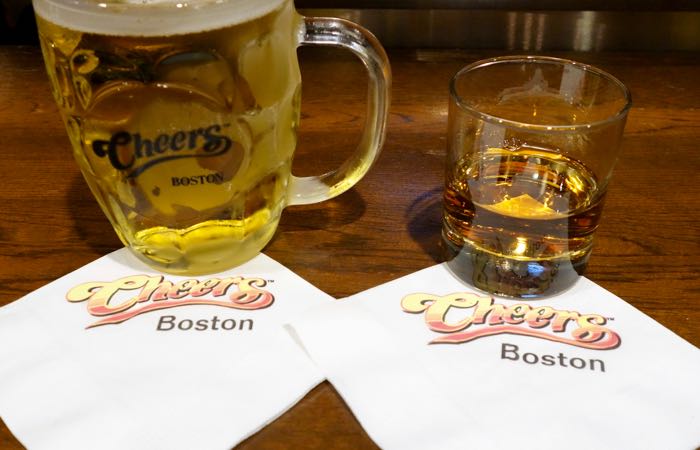
There are two different locations in the city, but the best vibe is at the Beacon Hill spot. Originally opened in 1969 as the Bull & Finch Pub (renamed Cheers in 2002), this is the bar that inspired the TV show and was used in the opening sequence exterior shots. Though kitschy and touristy now, the bar is so integral to Boston’s personality that the city named the block it’s on, Eddie Doyle Square, after one of the bartenders who worked there for 35 years, predating the show. With its central location and laid-back atmosphere, this is a great spot to wind down after a day exploring the city. -
Boston Common
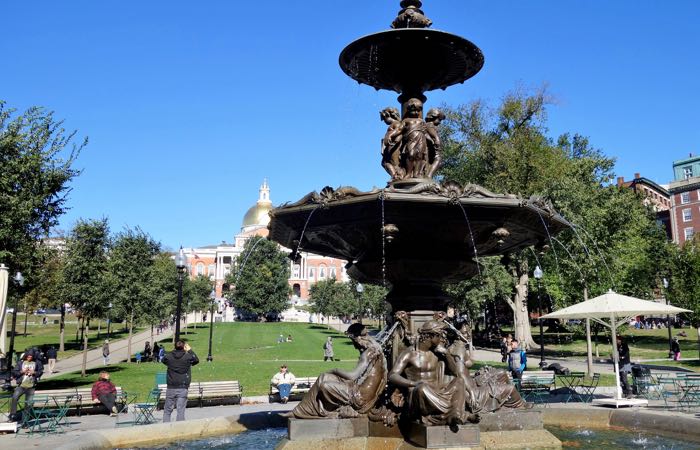
Probably the best known landmark in the city, Boston Common is the oldest park in the U.S. since 1634. The 50 acre park began as a cow pasture, then became a British camp in the pre-Revolutionary years, an execution ground, and more recently has been used as a public park for concerts, gatherings, protests, and speeches (notable speakers here include Martin Luther King, Jr. and Pope John Paul II). This park is a stop on the Freedom Trail; at any given time, you’ll see about a dozen guides dressed in Revolutionary-period clothing. It’s also home to the Shaw/54th Regiment Memorial, the first stop on the Black Heritage Trail. The winter months see the Frog Pond ice skating rink in full swing. -
Historic Cemeteries
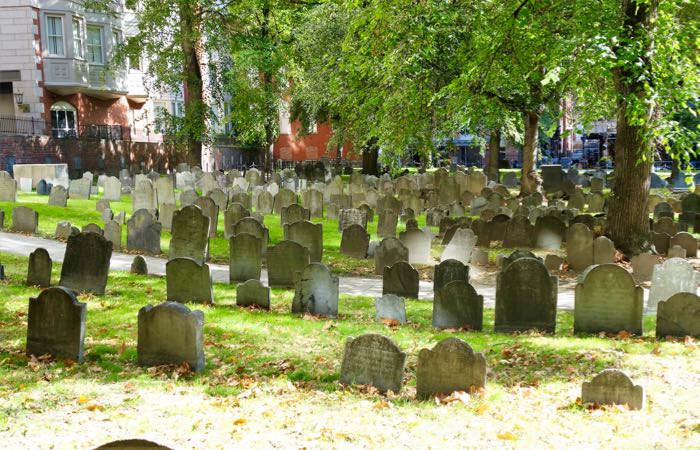
There are two historic cemeteries on the Freedom Trail: the Old Granary Burial Ground and Copp’s Hill Burying Ground. The Old Granary is the busier of the two. Established in 1667 with the burial of John Wakefield, this cemetery houses the graves of Paul Revere, John Hancock, and Samuel Adams, as well as the victims of the Boston Massacre. It is also the site of a huge marker for the Franklin family, though Benjamin Franklin himself is buried in Philadelphia. Copp’s Hill is a newer addition to the Freedom Trail, though it is an older cemetery from 1659. This is the burial site Prince Hall, abolitionist and founder of the America’s first African Masonic lodge. Cotton, Increase, and Samuel Mather, prominent ministers during the Salem Witch Trials, are also buried here, along with Robert Newman, who hung the signal lanterns (“one if by land, two if by sea”). The Snow Hill Street side of Copp’s Hill is home to numerous unmarked graves belonging to African Americans who lived at the foot of the hill. -
Old North Church
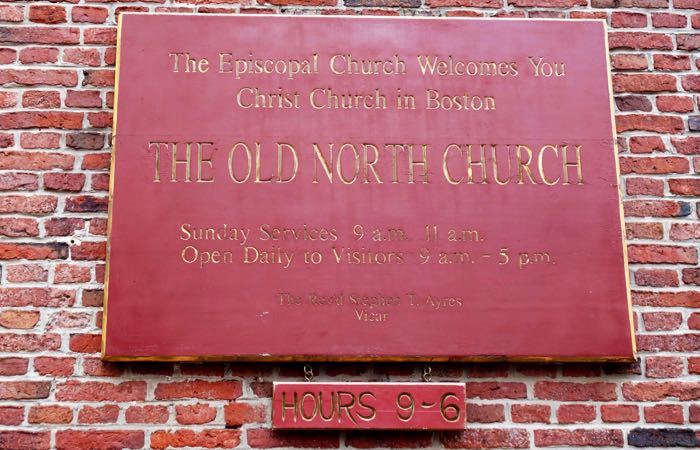
This is the site where the signal lanterns were hung, “one if by land, two if by sea,” according to Paul Revere’s instructions. Old North Church is an Episcopalian mission dating back to 1723 and is the oldest church in Boston. Its tower is its best-known feature, where the lanterns were displayed. But once inside, face back toward the organ to find four hand-carved, wooden angels sitting on the balcony railing, plundered from a French ship and donated to the church by pirate Thomas Grunchy in 1746. The church is free to visit, but they do suggest a donation of $3 for upkeep. -
Faneuil Hall
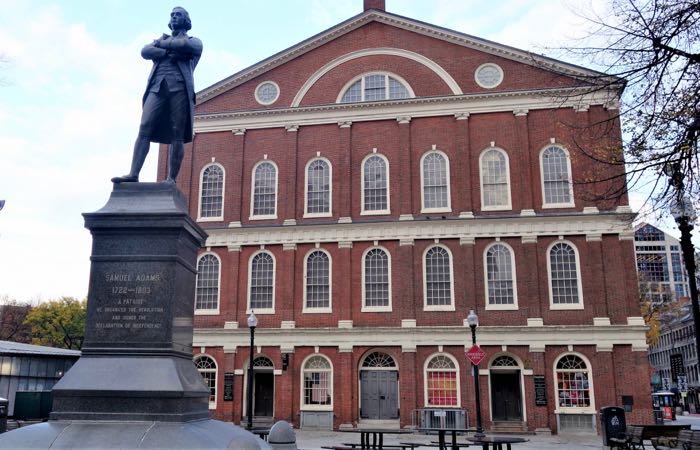
Founded in 1743, Faneuil Hall is best known today for its numerous food stalls, retailers, and indoor/outdoor mall space. Called “The Cradle of Liberty,” speakers including Samuel Adams argued for independence from Britain here; a statue of Adams is just in front of the entry. This marketplace and meeting hall was established in 1743, and remains a center of activity, busy with street performers, political events, shopping, and dining. -
Fenway Park
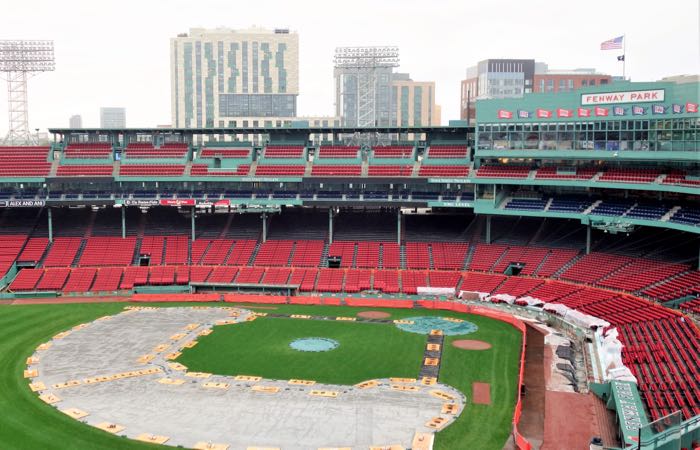
Home of the Boston Red Sox, Fenway Park is the oldest park in the Major Leagues. Because of its age and location, its size and shape is restrained, leading to some unique features, the most well-known being the Green Monster, the left field wall sitting a short way from home plate, and the Lone Red Seat in the right field bleachers, which marks the longest home run ever hit at Fenway. One hour tours are available from 9:00-5:00 on non-game days and three hours before game time on game days. -
Boston Harborwalk
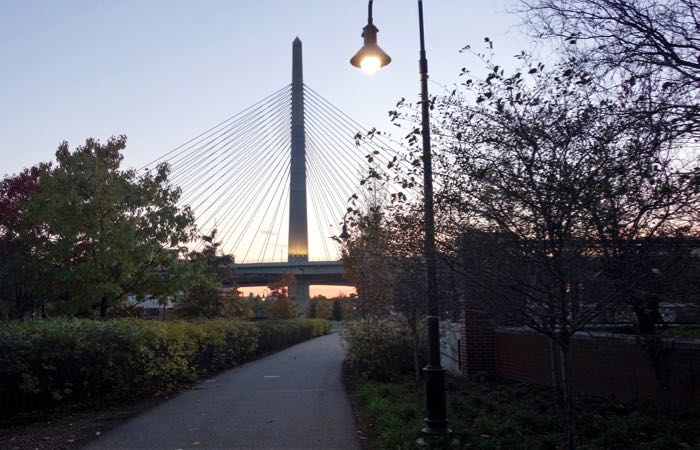
Following the waters’ edge, the Boston Harborwalk includes piers and wharves from Charlestown down to Castle Island with expansions planned to span a full 76 km. Views are stunning here, where visitors can take in harbor and city views or cruise its length on a boat or kayak. Several attractions spread over its length and include the USS Constitution, the Boston Tea Party Museum, New England Aquarium, and the Institute of Contemporary Art, among others. This is a perfect spot for a morning walk or a day spent ducking into attractions along the way. -
Harvard Museum of Natural History
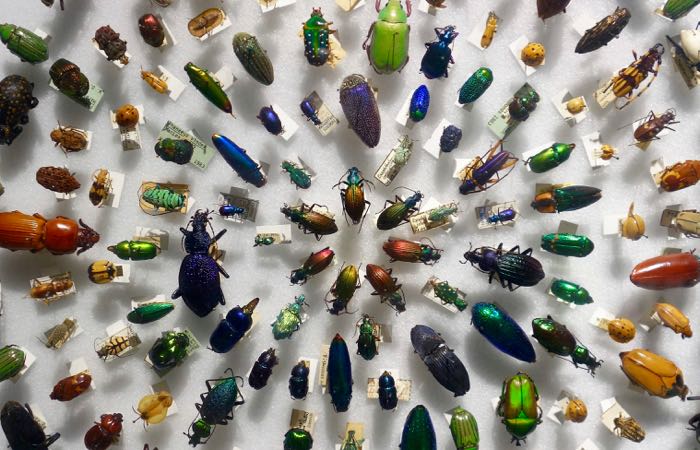
Located in Cambridge, the Harvard Museum of Natural History is actually comprised of three museums: the Botanical Museum, which boasts a gorgeous collection of glass flowers, the Museum of Comparative Zoology, with its huge blue whale skeleton and large catalogue of bird, insect, and animal models, both real and replica, and the Harvard Mineralogical Museum, with its meteorites, minerals, and gemstones. The museums altogether are relatively small; it shouldn’t take more than an hour or two to walk its full length. Connected to the Peabody Museum, admission paid to one grants entry to both. -
Peabody Museum of Archaeology and Ethnology
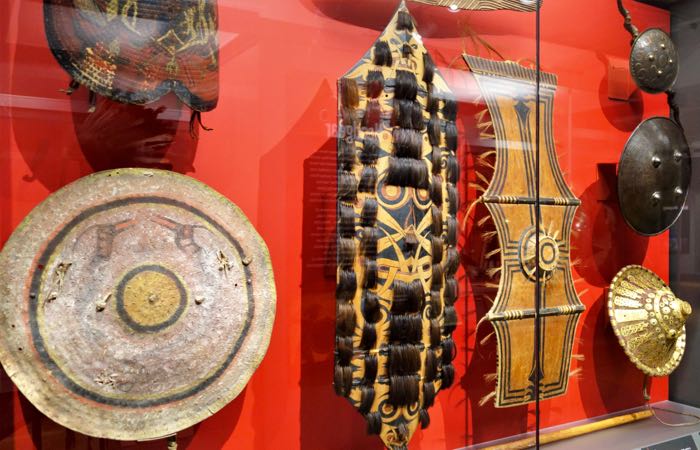
The Peabody Museum is home to one of the largest anthropological museum collections, with over a million objects and 500,000 photographs. The artifacts displayed come from all corners of the globe and are displayed according to region and type, with the largest collection covering the Americas. The museum covers tons of facets of human development, including arts, culture, daily life, and biological aspects. The museum is connected to the Harvard Museum of Natural History, and admission paid to one grants access to both museums. -
Harvard Yard
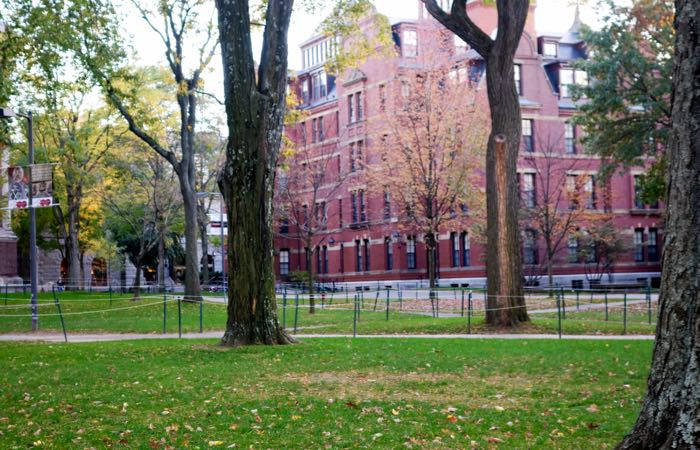
Harvard Yard is the oldest portion of the Harvard University campus, with a central grassy park area for recreation and events. You’ll find here the John Harvard statue, Memorial Church, as well as the school’s most important libraries. This is a busy central hub for students, and you’ll most always find a game going on, whether Frisbee or chess. The Yard opens onto Harvard Square, an area in Cambridge’s downtown core, filled with shops, restaurants, and bars. This area has a bit of a split personality; it’s always busy during the school year, but in summer, when students head home, it is incredibly quiet. -
New England Holocaust Memorial
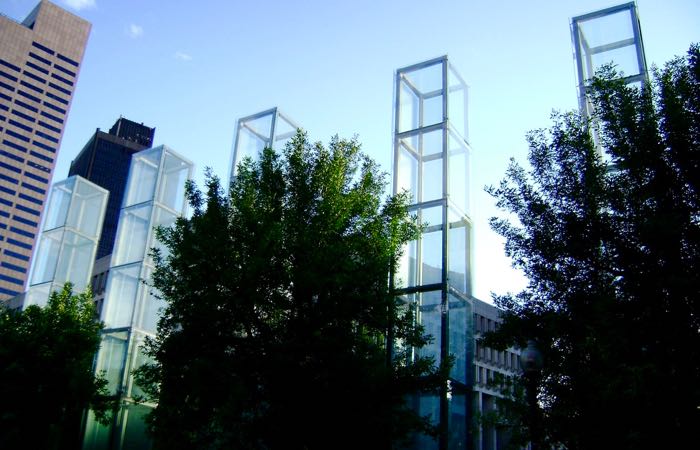
Located on Union Street, the Holocaust Memorial stands out in modern glass and steel against the red brick backdrop of the oldest neighborhood in the city. The six towers are dedicated to the memory of those who died in the camps, with numbers etched into the outside glass and steam rising from underneath a black granite walkway. The six towers relate to the six million killed, the six concentration camps represented here, and the six years of genocide. Lit with coals beneath a metal grating, the memorial glimmers all day and night.
photo credit -
Institute of Contemporary Art
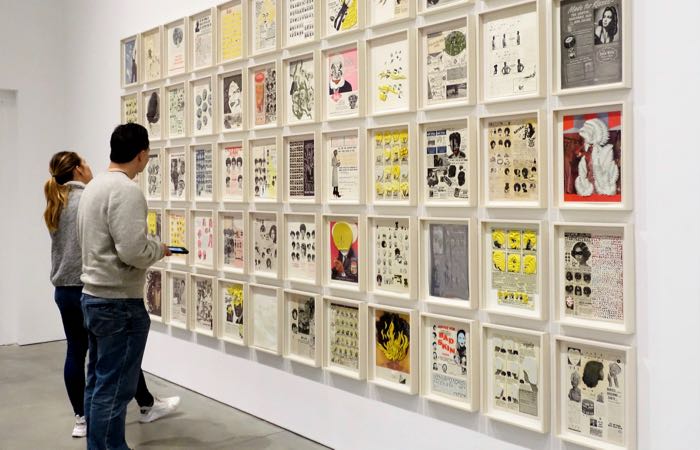
In a striking modern building, the Institute of Contemporary Art sits in a on the edge of the harbor in the Seaport District. The architecture itself has been polarizing, with some praising its innovative open design and exterior staircase, and others denouncing its angular shape and dull face. The collection is surprisingly small, considering the size of the building, though the ICA makes use of its extra space for dance and other performance arts. -
Mapparium
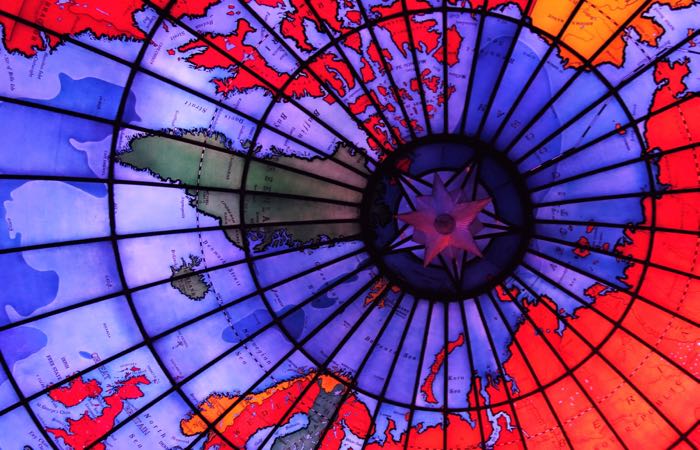
In the Mary Baker Eddy Library, the headquarters of the Christian Science Monitor, you’ll find the Mapparium, a huge glass globe, which is viewed from the inside. This is the only place on earth where you can see the whole world without being distorted by perspective; by standing in the middle, your eyes are equidistant from all points. Built in 1935, this three-story, illuminated map displays all geographic features accurately, but as a historical artifact, many country names are long out of use, such as Siam and the USSR. Its perfectly spherical shape and hard interior also make this a whispering gallery; facing any direction will allow the speaker’s voice to carry to its opposite point. Stand in the middle to hear your own voice in surround sound. Entry is by guided tour only, which is offered every 20 minutes between 10:20 and 4:00 Tuesday through Sunday. -
New England Aquarium

This is a fantastic aquarium right on the harbor. The centerpiece is a multi-story reef filled with sharks, sea turtles, stingrays, and colorful fish, with a corkscrew walkway leading up the floors to the open-top tank. A large penguin exhibit sits at the bottom, hosting twice daily feedings and talks. The New England Aquarium also has the second largest touch tank on the East Coast, featuring ray and sharks, plus a smaller touch tank with sea life from local tide pool areas. Plan your visit for a weekday before 2:00. It gets busy in the afternoons when the schools let out and completely absurd on weekends. -
The Paul Revere House
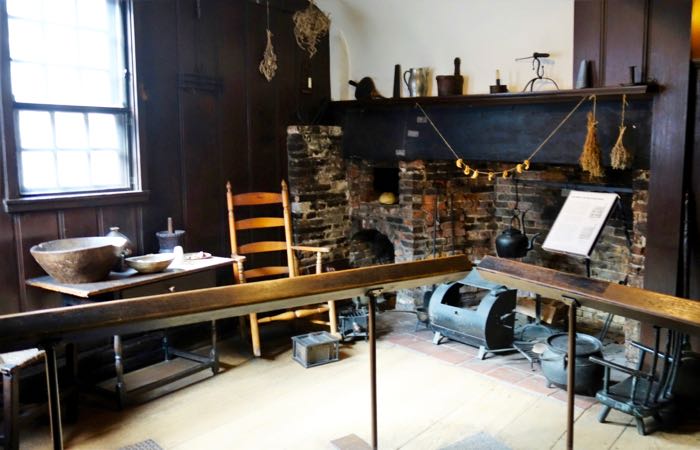
The oldest home in downtown Boston, the Paul Revere House was built in 1680 on the former site of Increase and Cotton Mathers’ church. The house was owned by Paul Revere for thirty years and was where Revere lived during the Revolutionary years. Though it had fallen into disrepair and was slated for demolition around the turn of the twentieth century, it was bought back by Revere’s great-grandson and fully restored. Over 90 percent of the home is original, with many heirloom furnishings from the Revere family years. This is one of only a few stops on the Freedom Trail that charges admission; entry is $5, cash only. -
Boston Public Market
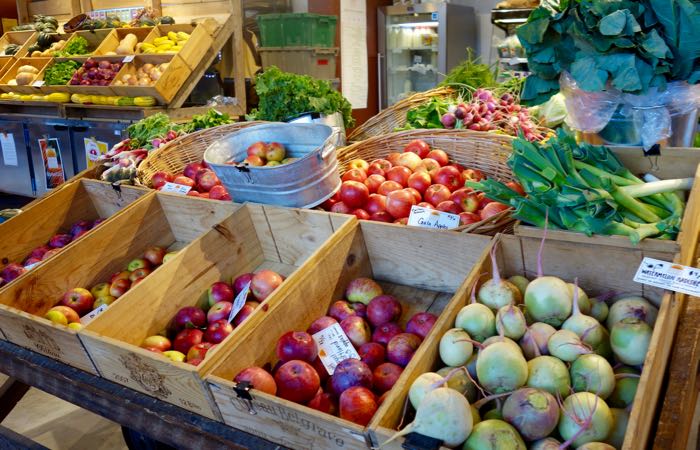
A new edition to the local food scene since 2015, the Boston Public Market is a year-round market, featuring over 40 local vendors of specialty produce, meats, wines, prepared foods, and more. Because it’s all indoors, the farmers’ market vibe continues throughout even the coldest weather. The management is still working out a balance between the farmers’ market and prepared food aspects, with a lunch crowd consuming more space than what’s available, so visit on the weekends to find more of a community feel. Do not miss the apple cider donuts, a New England favorite! -
Salem
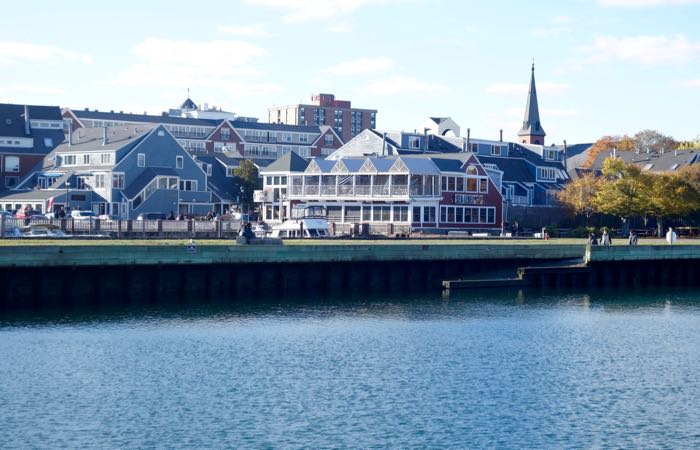
Best known for its tragic witch trials, Salem was once a world-renowned port, larger than Boston and a hub of international trade in the years following the Revolution. As a direct result of these trades, the Peabody Essex Museum was established, one of the oldest museums in the U.S. (since 1799) with one of the most extensive collections of Asian and Oceanic art, as well as maritime art and more. This is also the historic home of Nathaniel Hawthorne, where visitors can see the House of the Seven Gables for themselves. There are, of course, a ton of kitschy, witch-themed attractions here, some of which are fun, but many that should be avoided. Go ahead and skip the Witch Museum. Do take a harbor cruise, visit the Old Burying Point Cemetery, and poke your nose into some of the unique downtown shops for vintage clothing, spell books, candles, and quirky gifts. -
Museum of Science
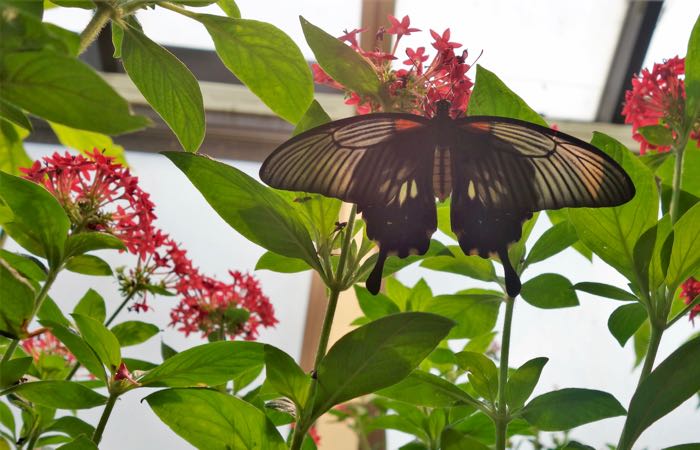
The Museum of Science spans the Charles River and is partially located in both Boston and Cambridge. One of the earliest comprehensive science museums in America, exhibits here run the gamut and include a butterfly house, IMAX, and an indoor lightning performance in the world’s largest Van de Graaff generator (daily at 12:00, 2:00, and 4:00). Though its general appeal is broad, this attraction is geared more toward families and children under 12. -
Memorial to Robert Gould Shaw and the Massachusetts 54th Regiment
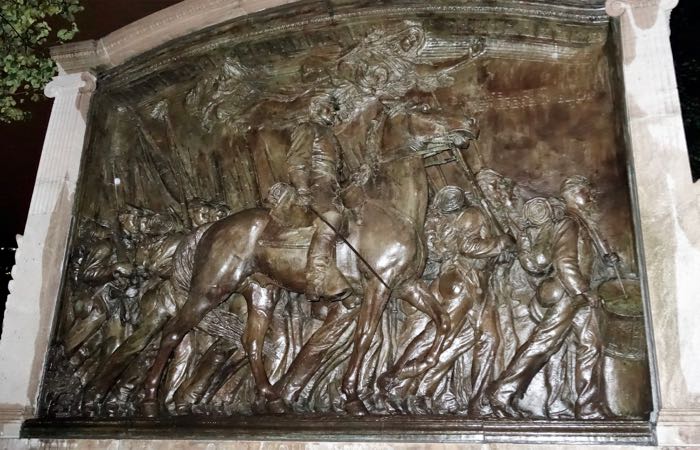
This bronze relief memorial stands at the northeast corner of Boston Common, honoring the first African American volunteer regiment of the Civil War along with their leader Colonel Shaw. Shaw was killed, along with 77 other soldiers and officers, in the battle at Fort Wagner, South Carolina in 1863. One of the surviving soldiers in the regiment, Sergeant William H. Carney, managed to save the flag despite his severe injuries; he went on to become the first black man to be awarded the Congressional Medal of Honor. This is the first stop on the Black heritage trail. -
Skinny House
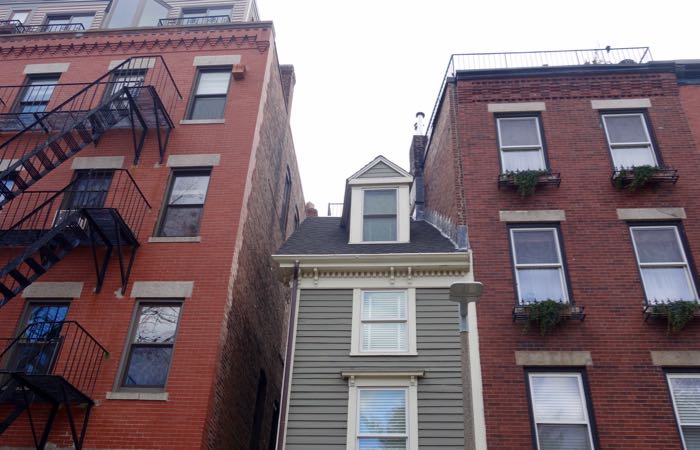
The origins of this spite house are murky, but the most common story has it that two brothers inherited the land after their father’s death. While one was away fighting in the Civil War, the other built a huge house on the land, thinking that the remaining space would be too small for the other to build on. When the soldier returned, he built the Skinny House (aka the Spite House) to block the sunlight and shut off the view of the harbor from his brother’s larger house behind. The house is four stories tall and measures just a little over ten feet at its widest point and nine at its slimmest. If seeing from the outside isn’t enough, you can also rent it out; three nights minimum are required at around $300 per night. -
Union Oyster House
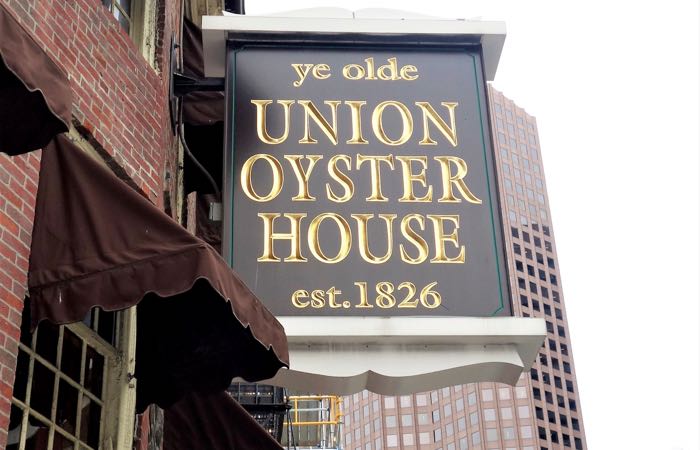
The oldest continually operating restaurant in America since 1826, though the building that houses it is much older, circa 1704. Union Oyster House is full of rich history! Daniel Webster regularly dined here, eating six plates of oysters at a time, and drinking a full tumbler of brandy and water with each plate. The French King Louis Philippe lived in exile here on the second floor prior to assuming the throne. America’s first ever waitress, Rose Carey, worked here beginning in the early 1920s. The food here is pretty basic pub fare, highlighting seafood, with lots of fried options. Nothing fancy here, but this is a fun place to stop for an afternoon bite.
 Santorini Dave was started in 2011 when I posted a short guide to visiting Santorini with kids. Now, my site publishes regularly updated guides to
Santorini Dave was started in 2011 when I posted a short guide to visiting Santorini with kids. Now, my site publishes regularly updated guides to
What is the best food tour in Boston?
I recommend the North End to the Freedom Trail – Food & History Tour. It’s fun, informative, and well-run.